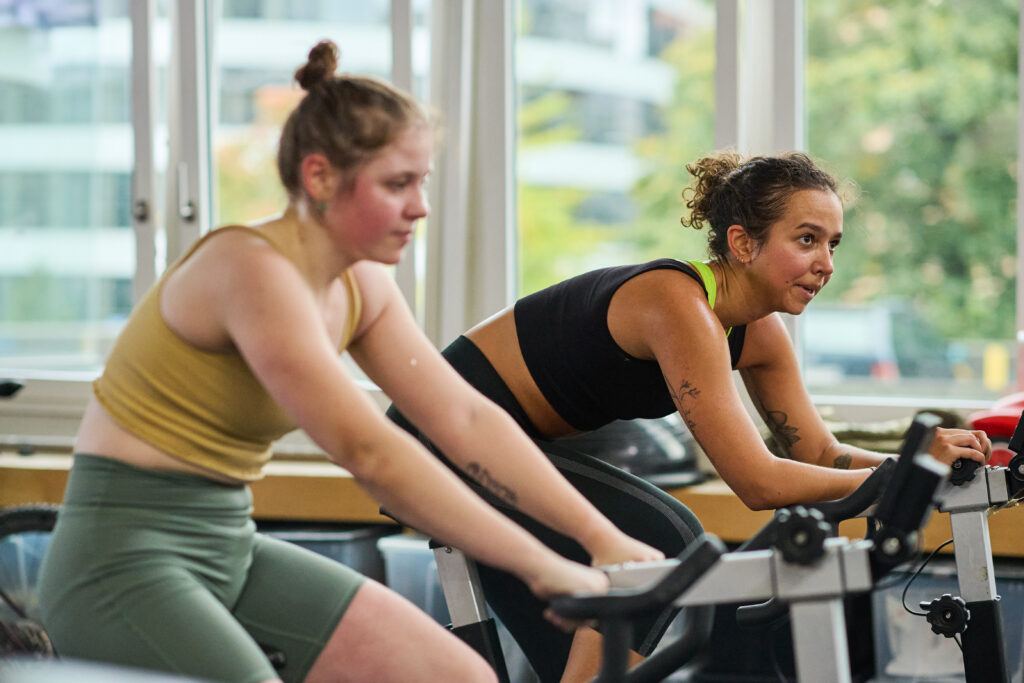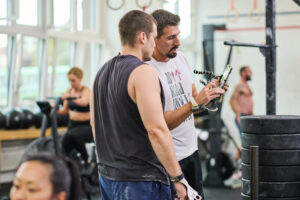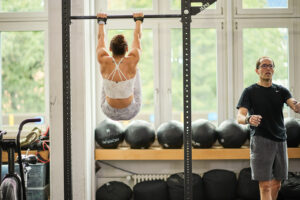
Hyrox training is one of the most misunderstood parts of the entire race experience. Even athletes with a strong background in fitness often prepare in ways that feel logical and intense, yet don’t actually build the adaptations the race requires. Whether you’re training independently or at a coaching-focused gym like CrossFit Kreis 9 in Zürich, understanding what Hyrox training is — and what it isn’t — changes everything.
Here are three things most people never realise until they’re deep into the process.
1. Proper Hyrox training should not look like race day
Many athletes naturally assume that effective Hyrox training should resemble the race in some way. Not necessarily by repeating the entire course, but by doing workouts that feel similar: intervals mixed with functional movements, creative rearrangements of the stations, or sessions that include movements that seem relevant — burpees, box jumps, lunges, wall balls, carries. Most gyms also program this way, wrapping familiar conditioning sessions into something that gives a Hyrox vibe. These sessions are hard, sweaty and satisfying. They feel like progress. And on the surface, it’s easy to believe they should work.
The problem is that these medium-hard workouts often sit in a training “grey zone.” They’re too intense to count as proper low-intensity aerobic work, yet not intense enough to create the sharp, high-intensity adaptations that actually improve race performance. Over time, athletes become tired but don’t significantly increase their engine, speed or strength. Their running plateaus, their legs feel heavy, and their recovery becomes inconsistent.
Effective Hyrox training looks almost the opposite. Most sessions should be genuinely low intensity: controlled runs, rows and bike rides where you can maintain a steady conversation and bounce back the next day. These sessions build the aerobic base you’ll rely on during eight kilometres of compromised running. A smaller portion of the week should contain true high-intensity work — short intervals that teach pacing and race effort without destroying your legs. The rest is dedicated to targeted strength work: heavy lunges, squats, carries, sled practice and wall ball strength endurance. This polarised model means that many of your training sessions should actually take place outside of your gym.
2. Hyrox is marketed as “easy access” — but only if you already have a fitness base
Hyrox calls itself “the fitness race for everybody”. The messaging is appealing: no qualification, no time cap, and a very inclusive feel. Signing up is indeed easy. Finishing is another story.
In reality, Hyrox is “easy access” only for people who already have a consistent fitness background. Athletes coming from CrossFit, functional fitness or running usually feel comfortable because they’ve already built the foundation the race demands. For others, the idea of accessibility quickly fades the moment they start pushing the sled.
The race categories — Open, Pro, Doubles and Relay — create the appearance of scalability, but the reality is that only the weights change. The running remains the same. Every individual athlete in Open, Pro or Doubles completes eight one-kilometre runs under fatigue. The stations — sleds, burpee broad jumps, rowing, carries, sandbag lunges and wall balls — aren’t adjustable beyond the prescribed loads. If you don’t have a base of strength, conditioning and technique, the race is far from beginner-friendly.
This is where structured Hyrox training makes a dramatic difference. In a coaching environment like CrossFit Kreis 9, athletes follow a progressive plan that prepares them for compromised running, increasing leg fatigue and the cumulative load of the event. Instead of guessing, they train in a way that matches the reality of the race rather than the marketing.
3. Hyrox is far more strength-biased than most people think
From the outside, Hyrox looks like a running event with some functional breaks. Once you touch the sleds, that illusion disappears quickly. Hyrox is a strength endurance race where the running becomes the “recovery.”
The sled push and pull alone can shock even experienced runners. Depending on the division, these loads can exceed 100 kg. And they’re not followed by rest — they’re followed by burpee broad jumps, farmer’s carries, sandbag lunges and finally 100 wall balls. Many athletes who are strong disappear on the running. Many athletes who run well disappear at the stations. The consistent performers are those who train specifically for the strength endurance the race demands.
This strength bias changes everything about Hyrox training. You cannot rely on running alone, nor can you solve it with metcons. You need real strength: heavy squats, hinges, lunges, carries, sled work and trunk stability. Without this foundation, the stations become the limiting factor, no matter how good your aerobic engine is. The best Hyrox athletes aren’t simply fast or strong — they’re balanced and trained specifically for the demands of this event.
Bringing it all together
Hyrox training is often misunderstood because many athletes unknowingly chase the feeling of the race instead of the adaptations that matter. True progress comes from polarised training, not endless medium-hard conditioning. Hyrox is accessible in spirit but physically demanding in reality, especially for those without a solid foundation. And despite its reputation as a running-focused event, Hyrox is fundamentally a strength endurance race disguised as a long run.
When you train with intention — building strength, developing your aerobic base and respecting recovery — Hyrox becomes both achievable and enjoyable. This is the approach we take at CrossFit Kreis 9, where athletes train for performance, not punishment.




